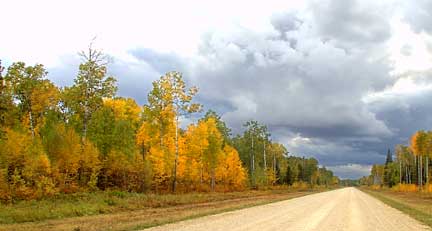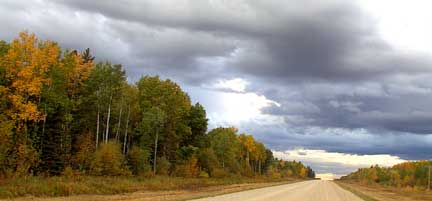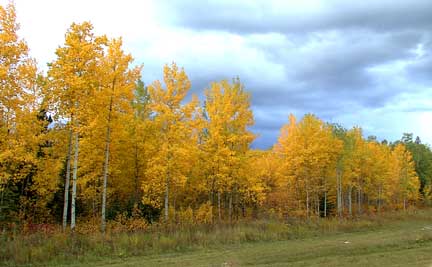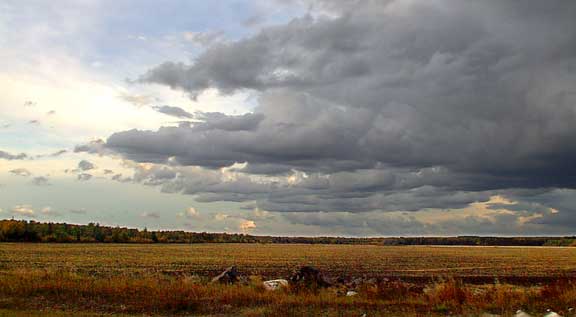| ----Autumn In The Forest |
 |
| FTLComm - Red Earth - September 19, 2000 |
 The provincial forest that begins about half an hour East of Carrot River and engulfs both Red Earth and Shoal Lake First Nations reserves is a truly diverse forest with a great mix of tamarack, black spruce, white spruce, birch, and aspen trees with just as wide a variety of small shrubs that seem to be there only to make this time of the year the most spectacular scene that one can lay eyes upon. These pictures were taken Monday late afternoon with some pretty serious clouds |
 making their way across the sky pushed along by a steady West, Northwest wind. Each time I pulled over to record yet another image of pigment I was looking towards the South as the van was on its way West to Nipawin. The aspen trees seem to have the widest repertoire of colour and are clearly the stars in the fall show. |
 Many places they filled the viewfinder on the camera with golden foliage with a richer amber collection of shrubs along the ground. It seems almost overwhelming to question why a stand would all turn colour in unison while in other areas the boisterous green of the passed summer remains steadfastly clinging to life. When we consider the chaos theory and how things that often appear random are actually the result of specific determining factors one is forced to concede the remarkable limitation of our |
 awareness even of some thing that we have seen as a species year after year and yet still have so little comprehension on the process and implications. While some stands seem gold some are pure yellow like this one which had leaves so pale as to almost white having lost all the carbon converting chlorophyll and moved to another dormant stage of existence. Clear of the forest I could look South along its edge and see the clear signs of approaching weather the sort of weather that brings with it cold temperatures and geese gathering in flocks to head South, weather that brings rain and as the temperatures continue to descend frozen water that will cover the land for six months, global warming or not, as winter will grip this land once more. |
 |
| These two pictures were taken at the same place just on the forest's edge, the one above looking South and the one below looking West. About a mile ahead the field was completely covered with Geese, Canadas, Lesser Canadas, Snow Geese and Black Brants. |
 |